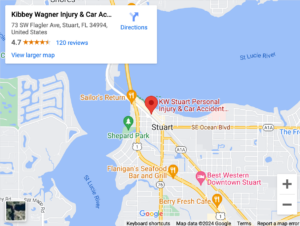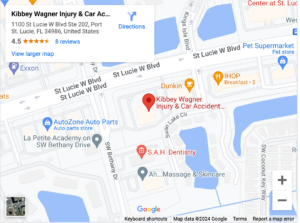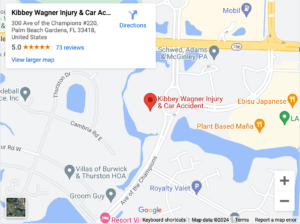
Navigating the insurance world can be tricky, especially when understanding the differences between no-fault and at-fault insurance. If you’re a driver in Florida, this information is crucial as it will help you better understand how injury claims work in case of a car accident.
In this article, we will break down these two types of insurance policies, explain how they work, and what they mean for you in terms of coverage.
What is No-Fault Insurance?

No-fault insurance is an auto policy under which your insurance company pays for your medical expenses and other financial losses if you’re injured in a car accident, regardless of who was at fault. This system is designed to reduce the need for litigation after car accidents and to speed up the compensation process.
Key Features of No-Fault Insurance
Key factors of no-fault insurance include:
- Personal Injury Protection (PIP): In Florida, no-fault insurance is also known as Personal Injury Protection or PIP. This coverage is mandatory for all drivers in the state. PIP pays you up to a specific limit for medical expenses, regardless of who caused the accident.
- Limits on Lawsuits: With no-fault insurance, there are restrictions on your ability to sue the other party involved in the accident unless specific criteria are met, such as suffering from serious injuries.
- Swift Compensation: Since the insurance covers your expenses, it generally allows for a quicker payout, helping you manage immediate medical bills and wage losses.
No-fault insurance simplifies the compensation process, but it also imposes certain limits on your ability to seek full recovery through litigation.
What is At-Fault Insurance?
At-fault insurance, also known as liability insurance, involves determining which driver is responsible for the accident. In this system, the at-fault driver’s insurance company pays for the damages and expenses of the other party involved in the accident.
Key Features of At-Fault Insurance
Key features of at-fault insurance include:
- Liability Coverage: This type of insurance coverage is designed to protect you if you are responsible for an accident. It typically covers bodily injury and property damage that you cause to another person.
- Determination of Fault: To enact this insurance, parties must establish who caused the accident. This may involve evidence collection, witness accounts, and police reports.
- Litigation Option: In an at-fault insurance system, injured parties can sue the driver for damages if the insurance coverage is insufficient to cover their losses.
At-fault insurance can provide comprehensive compensation but often requires a more complex claims process to determine liability.
Pros and Cons of No-Fault Insurance
The advantages of no-fault insurance include:
- Fast Compensation: Speeds up claims processing since no determination of fault is needed.
- Reduced Litigation: Minimizes the legal battles often associated with accident claims.
- Predictable Coverage: Guarantees that your medical expenses will be covered up to the policy limit.
The negatives of no-fault insurance include:
- Limited Coverage: The limits might not fully cover serious injuries or losses.
- Increased Premiums: This may result in higher insurance premiums due to the mandatory nature of coverage.
Understanding these pros and cons can help you decide if no-fault insurance adequately meets your needs or if you need supplementary coverage.
Pros and Cons of At-Fault Insurance
The advantages of at-fault insurance include:
- Entire Liability Assignation: Clearly identifies which party should pay for damages.
- Potential Larger Settlements: Allows for seeking compensation beyond policy limits through lawsuits.
- Comprehensive Recovery: Encourages thorough assessment and recovery for serious injuries.
Meanwhile, disadvantages include:
- Longer Resolution Time: It can take longer to settle claims due to the need for fault determination.
- Complex Legal Processes: This may require more intricate legal navigation and documentation.
Considering these factors is crucial in understanding how at-fault insurance may impact your compensation, especially if you are in an accident outside Florida.
How No-Fault and At-Fault Insurance Apply in Florida
Florida is a no-fault insurance state, meaning each driver’s insurance covers their injuries up to a specific limit, regardless of who caused the accident. Florida drivers are required to carry at least $10,000 in PIP coverage. In cases where injuries are severe (for example, significant disfigurement, substantial disability, or death), Florida law allows the injured party to step outside the no-fault system and file a lawsuit against the at-fault driver.
Understanding how these rules apply can help protect your interests and ensure you receive the compensation you deserve after an accident.
Understanding No-Fault and At-Fault Insurance
Whether no-fault or at-fault insurance is better depends on individual circumstances and comfort with quick compensation or potentially lengthy legal procedures. However, as a Floridian, you must follow the no-fault system with an understanding of its rights and limitations.
Understanding the differences between no-fault and at-fault insurance can empower you to make informed decisions about your coverage and claims. Florida’s no-fault system offers quick protection but limits additional compensation and suing, which are essential factors to consider during unfortunate events like car accidents. Contact or call Kibbey Wagner Injury & Car Accident Lawyers at (772) 444-7000 if you need legal assistance.




